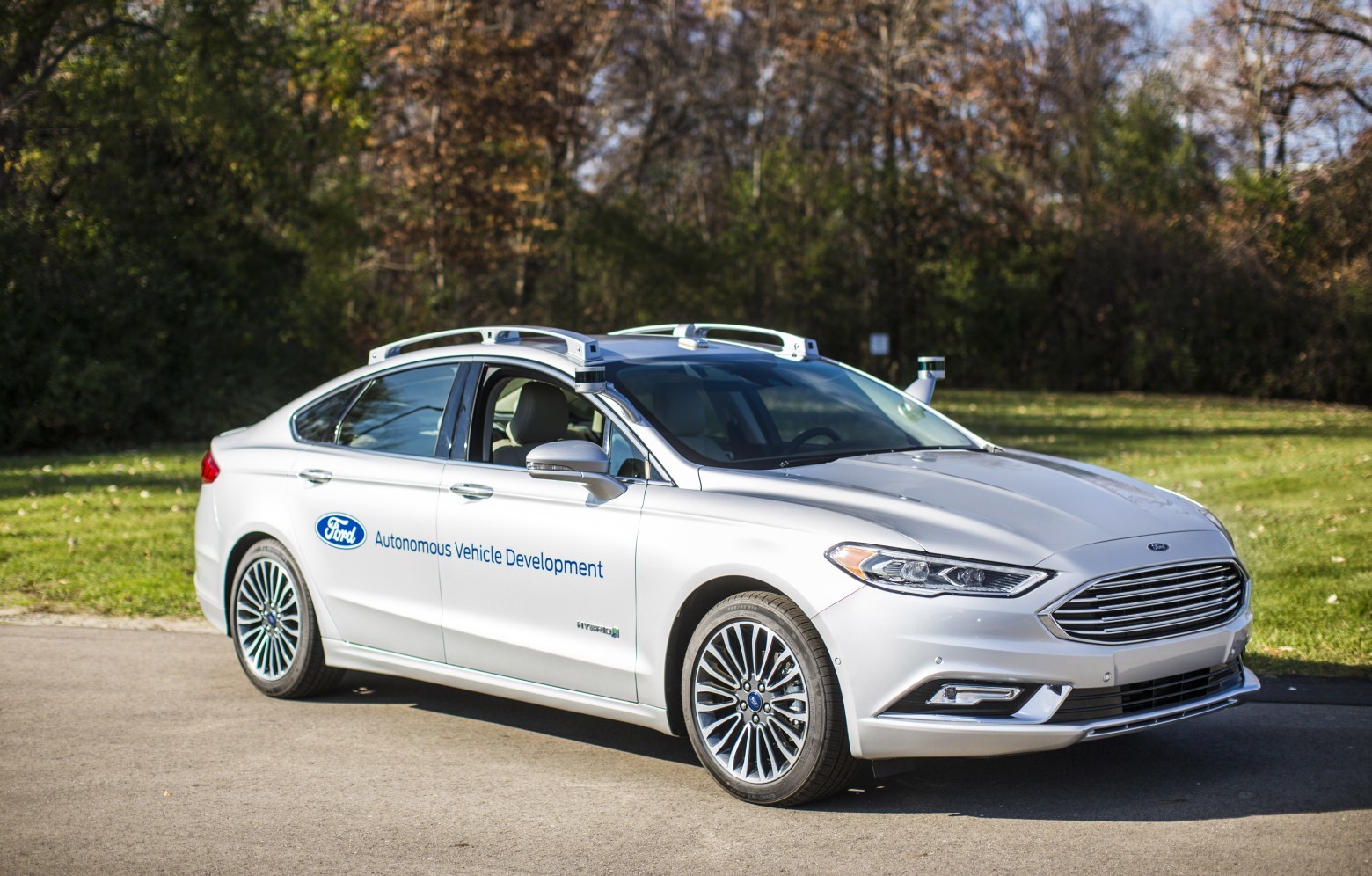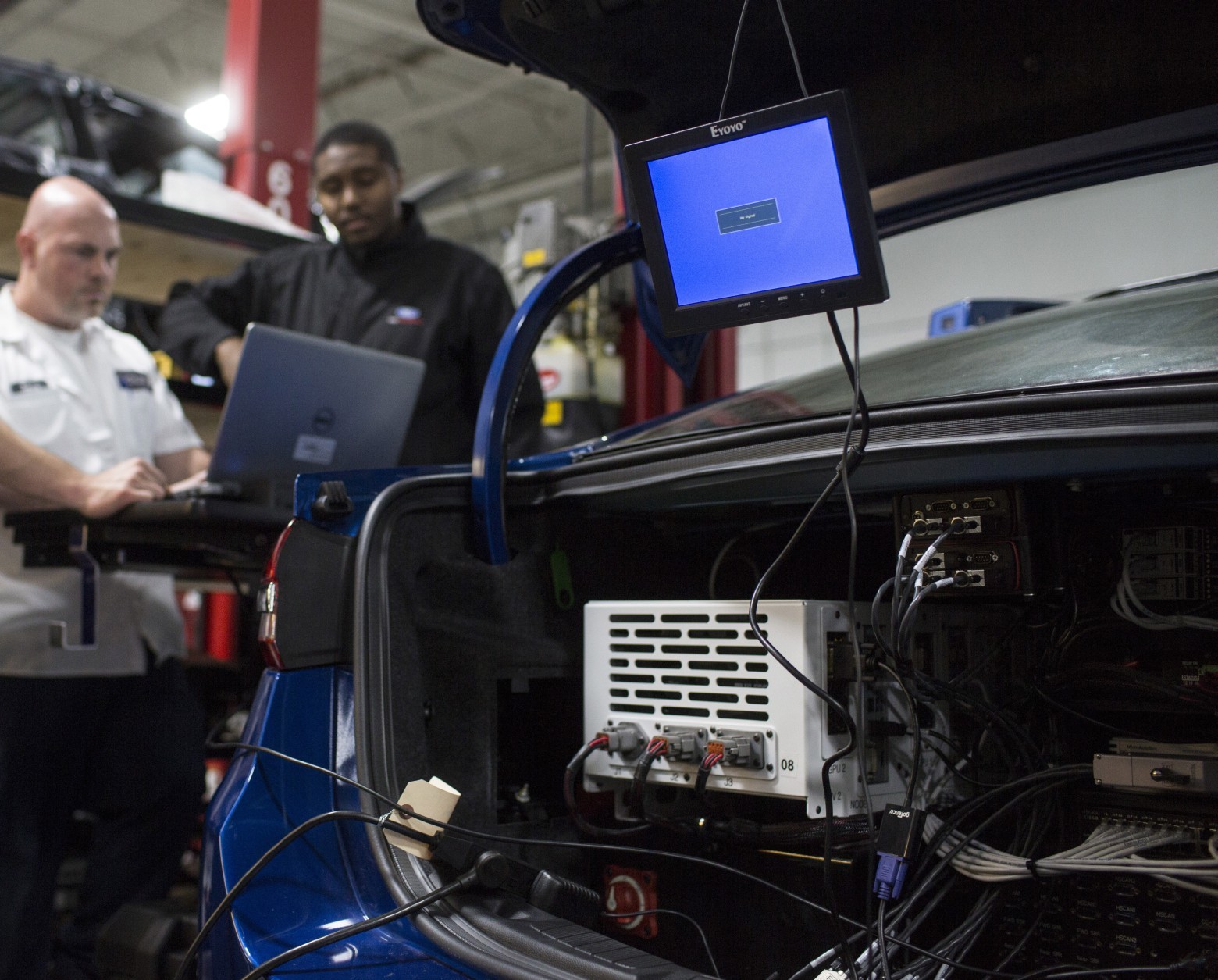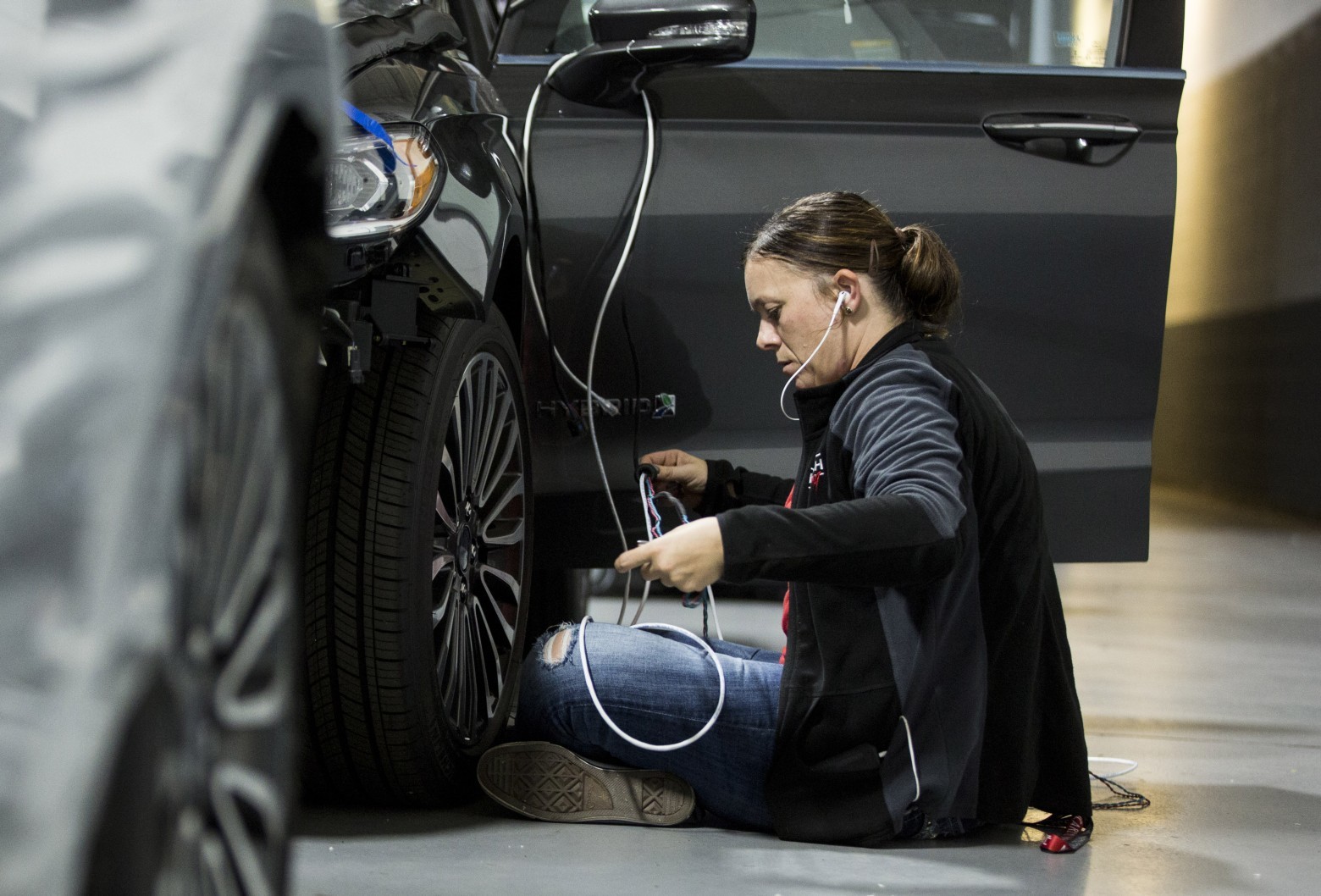New Ford drones replicate human driving

Ford is gradually coming to the first roles in the production of unmanned vehicles, and especially in the development of hardware. Unlike Google and other IT companies that are experimenting with drones, Ford can afford the low-level integration of technology, and these models may well appear on the market in about the way they are being tested.
Now the company introduced the second generation Fusion unmanned aerial vehicles with a hybrid power plant. Their running gear is the same as the serial Fusion Hybrid, but in terms of computer equipment, these cars will give odds to anyone. Hardware clogged the entire trunk.
First unmanned Ford Fusion Hybrid
The first version of the unmanned Ford Fusion Hybrid was born three years ago , in December 2013. These were rather unusual cars with “horns” of four (!) Lidars on the roof.
')

Ford Fusion Hybrid first generation
The debut of the company in the technologies of robocars was made thanks to the technical assistance of specialists from the University of Michigan and with the participation of the insurance company State Farm Insurance. Interestingly, insurers immediately "fit in" with this initiative, which in the future could bury their motor third party liability insurance business (they probably don’t think so). As for the University of Michigan, Ford engineers created unmanned vehicles with him as early as 2004-2007, when the company participated in unmanned vehicle races organized by DARPA.
The first model was experimental. In addition to the long-term task, she also fulfilled short-term goals - the creation of convenient driver assistance functions. They can be implemented in commercial models, along with existing technologies of adaptive cruise control, automatic parking, blind zone response (Blind Spot Information System in Ford cars), exit warnings, collision warnings and braking assistance. All this is implemented in production models.
For an experimental autopilot model, they wrote special software and installed a car computer that scans the surrounding terrain with the help of four lidars (60 m scan radius). Complementing the picture with information from other sensors, the University of Michigan software dynamically creates a 3D model of the surrounding terrain.
New generation

In the new generation of unmanned Ford Fusion Hybrid, engineers have got rid of two of the four lidars, but the remaining lidars have much better technical characteristics, including a wider field of view. In addition, they have a thoughtful design, so that the lidars no longer stick out like horns on the roof. Two 360-degree lidar in the form of washers have an increased range, compared with the previous model: about 200 m in each direction. There are also two arcs with three cameras on the roof. Another camera under the windshield. Additional sensors near and far range provide computer vision in the rain, fog and snowfall.

Ford engineer secures the lidar on an unmanned vehicle
The developers have also significantly updated the car computer and software. New equipment and sensors generate 1 terabyte of information per hour, it needs to be promptly processed. In addition, such a computing complex consumes a lot of energy - which is why unmanned vehicles will never work on gasoline. We need at least a hybrid power plant, which can stably supply electricity to a computer.

New car computer Ford Fusion Hybrid takes up almost the entire trunk
Chief engineer of the Ford unmanned vehicle program, Chris Brewer, writes that the electric controls of the robotic vehicle in their current form are already close to mass production. According to him, the car combines two technologies: an autonomous platform and a virtual driver system. The new Ford model is designed for additional development and testing, first of all, a virtual driver system, which requires processing a large amount of data from sensors and large computing resources.

Ford Engineer on the assembly line for assembling unmanned vehicles
Ford believes that their cars will meet the 4th level of vehicle automation according to the SAE standard ( international standard J3016 ). This level provides for the presence of a “dynamic autopilot”, which is able to respond to the traffic situation even if the human driver does not respond to the signal and does not take control of itself, as expected. The task is to copy everything that the driver-man is doing at the wheel. That is, the autopilot is trying to intellectually copy human driving - this is the “virtual driver system” (virtual driver system).
The virtual driver system includes sensors (lidars, cameras and radar), localization and trajectory algorithms, a computer vision and machine learning system, highly detailed 3D maps and a high-performance computer.
Autopilot uses data from two systems: 1) pre-prepared 3D-maps; 2) dynamic information from sensors for checking with the map and for finding objects that are not on the map - these are pedestrians, cyclists and other cars. The computer vision system can even recognize the signals of the traffic controller.
A car computer performs three tasks: processing new information from sensors; decision making and driving.
Theoretically, combining information from the two systems will allow the autopilot to cope with driving in the same way as a person, or even better than a person, says Chief Engineer Chris Bruyere.
Simultaneously with the release of the new Ford model, the fleet of unmanned vehicles that are being tested on public roads in Arizona, Michigan and California is expanding from 30 to 90 pieces.
Ford has not given up on its promise to release a fully autonomous car by taxi in 2021 . Engineer Ford added that in the end, such a car will be produced without a steering wheel and pedals.
In order for everyone to enjoy the unmanned taxi, specialists are now working on solving unusual situations: what to do to the drone, if the passenger left the bag on the seat, what to do if he did not close the door and something was stuck in it, etc. “The future is coming. And we can't wait, ”says Chris Bruyere.
Source: https://habr.com/ru/post/400305/
All Articles